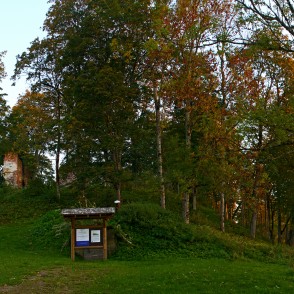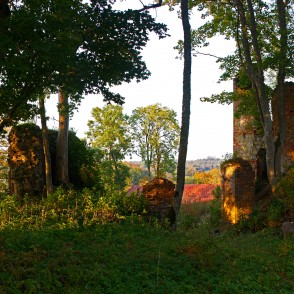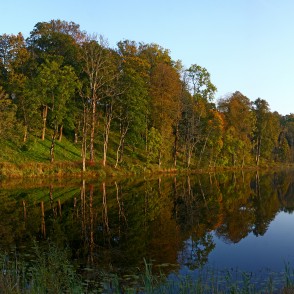The ruins of Embūte Castle are located in Embūte, Latvia (German: Amboten), in Embūte Parish, Vaiņode Municipality, not far from an ancient castle hill erected by Curonians. It was an ancient Curonian settlement and is mentioned in ancient chronicles as a place with strong Curonian resistance to German crusaders.
History
Embūte Castle was built in the middle of the thirteenth century as residence for the Bishop of Courland. It came in the hands of the Livonian Order for a short period, but in the end of the thirteenth century it again belonged to the bishop. The castle was many times rented in the following centuries. In the sixteenth century the castle became a centre of big manors and residence for local German landlords. The castle was destroyed in the Great Northern War. Some documents from the eighteenth century tells, that only the castle walls are preserved. In the same century a manor was erected on the old castle walls. It was expanded in the nineteenth century by demolishing one of the old gate towers.
The last owner of the castle was the widow of Hans von Hahn. The castle burned down in 1920 and the baroness moved to Germany. Local rumours says that the baroness burned the castle to avoid its nationalization by the new Latvian government. During the agrarian reforms in Latvia (1921–1930) all manors and land was nationalized and divided by the Latvian government. After the Second World War, the local Soviet kolkhoz used stones from the castle as building materials.
Today's Castle
Embūte Castle ruins are situated far from the main road, in the sparsely populated region of Courland. Today's ruins are surrounded by trees and in quite bad condition. Only fragments of some walls and towers are visible.
en.wikipedia.org







